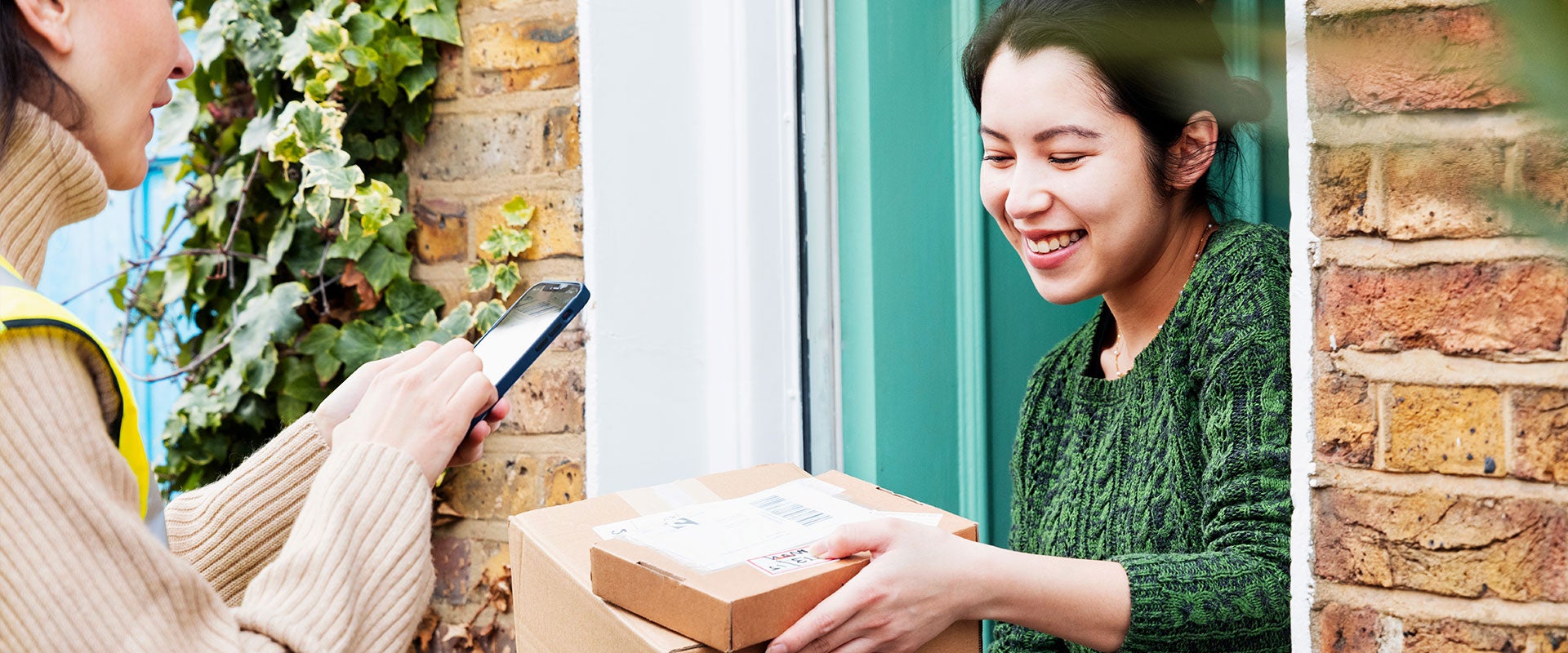Two-thirds of consumers have indicated that they would pick up parcels from a convenient location if a retailer provided information at checkout about the environmental benefits of doing so.3 Recent initiatives from the Royal Mail to inform customers about the most sustainable option for delivering their purchases and Amazon combining multiple orders into a single package illustrate how parcel carriers are becoming more aware of the need to communicate to consumers about their efforts to improve sustainability.
Hassle-free returns
With ecommerce penetration at such high levels, our retail clients have spoken about the importance of delivering a winning customer experience that offers many of the advantages of in-store shopping and a seamless end-to-end experience. This includes the requirement for easy, hassle-free returns — a key factor that has helped unlock fashion ecommerce. More than 40% of consumers regularly order more products than they need with the intention of returning some or all of them, and two-thirds expect retailers to offer free returns. This expectation has been driven by leading online retailers such as ASOS offering free returns, no doubt contributing to their impressive growth.
However, other retailers, such as Boohoo and Zara, have already responded to the increasing cost of processing high volumes of returns by introducing a return charge for consumers. This necessarily requires a fundamental reset of consumer expectations and is a step that may alienate some consumer segments. Therefore, a middle ground is being pursued by targeting so-called serial returners (who, for example, order multiple sizes of the same item or return an item they added to an order only to reach the free delivery threshold) or by increasing the minimum spend threshold for free/discounted delivery.
Carriers can also do more to support retailers that are facing the challenge of how to handle increasing volumes of returns. Improving carriers’ reverse logistics processes can reduce the costs associated with facilitating returns and enable retailers to continue offering this service (for free or for a minimal charge). Integrated returns management systems provide greater SKU-level visibility and data capture, which enables carriers to work with 3PLs (third-party logistics) to determine the most efficient course of action for an individual return (e.g. direction to store circuit or local fulfilment centre for repack). As these systems become more advanced, retailers and carriers will be able to forecast predicted returns and incorporate them in their capacity planning.
Can carriers meet consumers’ expectations while maintaining profitability?
Parcel carriers that have been able to scale their capacity and operations (to cope with the rapid rise and subsequent volatility in demand for carrier services) have seen impressive results in terms of both revenue and profitability. But one of the biggest challenges now facing carriers is how to meet consumers’ expectations without squeezing their margins. Rising wages and fuel costs are likely to persist in a meaningful way through the rest of 2023 and into 2024, but the impact of an increasingly challenging macroeconomic environment on demand is not yet clear. Fortunately, some other causes of higher costs, such as driver shortages, appear to be subsiding, according to recent data.4
Nevertheless, carriers must continue to innovate and evolve to preserve their margins and meet the rising demands in ecommerce. Carriers that want to continue to offer their customers a cost-effective service will need to find ways to manage their expenses appropriately. Partnering with other value chain participants (including competitors) to increase network breadth and density will allow carriers to achieve economies of scale and de-duplicate costs. Greater utilisation of distributed fleet models via the gig economy or brokering parcel delivery jobs can enable carriers to efficiently scale their capacity to cope with periods of fluctuating demand (albeit raising potential challenges when it comes to maintaining quality and reliability of service). This trend is already underway in other last-mile delivery sectors, with Just East recently announcing they intend to make greater use of the gig economy at the expense of full-time delivery drivers.
These initiatives will be key to further increasing ecommerce’s share of retail sales — and with it, increased parcel volumes — while also maintaining profitability for carriers.
For more insights on how ecommerce logistics businesses could approach these issues, please contact strategy@lek.com.






